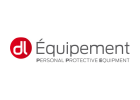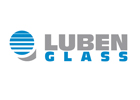It is well established that energy efficiency can help reduce the carbon footprint of Europe’s building stock. But energy efficiency as a type of fuel? Now there’s a concept you probably haven’t seen. And for good reason – it simply isn’t there.
Look at any graph, chart or spreadsheet breaking down Europe’s energy mix and you’ll see percentages for oil, natural gas, renewables, etc. What you won’t see is energy efficiency.
“If something isn’t visible, it won’t be prioritised,” says Jean-Sébastien Broc, a researcher at the Institute for European Energy & Climate Policy (IEECP).
Jean-Sébastien made his remarks on increasing energy efficiency’s visibility during a Knauf Insulation supported session at the European Alliance to Save Energy’s European Energy Efficiency Day event.
UNDERSTANDING ENERGY EFFICIENCY AS A FUEL
Energy use and energy efficiency go hand-in-hand. To illustrate, consider a house that is energy inefficient, one that lacks the proper insulation needed to keep heat in. Because it is poorly insulated, the house requires a higher flow temperature to deliver the same level of indoor comfort.
Getting that higher flow temperature means using more energy – and with heating and cooling responsible for an estimated 35% of a building’s total energy consumption, increasing a home’s energy efficiency can go a long way in reducing fuel use.
Thus, the more efficient the building, the more energy saved. And that’s just one house. Make a lot of homes and buildings energy efficient and you can see how energy efficiency could play a big part in achieving energy sovereignty.
In fact, according to a May 2022 Policy Briefing by the Building Performance Institute of Europe (BPIE), renovating residential homes with proper insulation would result in a 44% reduction in the natural gas used for heating. Furthermore, such renovations would ultimately save 45% of the final energy consumption currently used to heat Europe’s residential buildings.
ON THE OUTSIDE LOOKING IN
As these savings mean less energy produced, energy efficiency should be at the forefront of the energy mix. “Making efficiency clearly visible within the energy mix is the first step to prioritising the energy efficient retrofitting of buildings,” says Katarzyna Wardal-Szmit, EU Public Affairs Manager at Knauf Insulation. “Ensuring that all buildings are properly insulated is a critical step in Europe’s journey to becoming climate neutral and energy independent.”
Part of the reason efficiency is left on the outside looking in is the result of how the mix is portrayed. For instance, most diagrams start by showing energy sources, the crude oil, gas, renewables, etc. They then move to how these sources are transformed into electricity, heat, and fuel. Only at the very end do we finally see how the energy is used.
According to Jean-Sébastien, this portrayal is backwards. “Showing energy sources first prioritises producing more when what we need is not energy per se, but the services that energy enables,” he explains. “The objective should be using energy better, which means putting energy efficiency first.”
BRINGING ENERGY EFFICIENCY INTO THE MIX
Jean-Sébastien shared a couple of ideas on how to get energy efficiency to the front of the line. For example, by combining energy data with other national statistics, one could calculate overall energy efficiency improvements over time.
“The advantage of this top-down approach is that it is comprehensive, it uses data that aligns with today’s energy statistics, and it is based on well-established methodologies already implemented by the EU and many Member States,” he says.
There’s also the bottom-up and forward-looking methods. Whereas the former tracks and aggregates the results of existing energy-efficiency policies, the latter shows how additional energy efficiency measures can help to meet future targets like achieving carbon neutrality.
“Both methods are particularly useful for establishing objectives and assessing how energy efficiency initiatives, such as the Energy Efficiency First principle, can help achieve those objectives,” says Jean-Sébastien.
Because energy efficiency can serve as an alternative to new power capacity, at Knauf Insulation, we believe it deserves a front row seat within EU energy policy. “A good place to start is to use these methods to designate energy efficiency as the first fuel in all EU and national energy mixes,” adds Katarzyna.
Measured energy savings are already offered to customers by innovative businesses. For example, Knauf Energy Solutions’ retrofit services provide ongoing information and analysis of energy savings achieved through renovation.
“What can be measured can be compared and, with digital solutions, we can measure energy efficiency the same way we measure energy produced,” concludes Katarzyna.


























